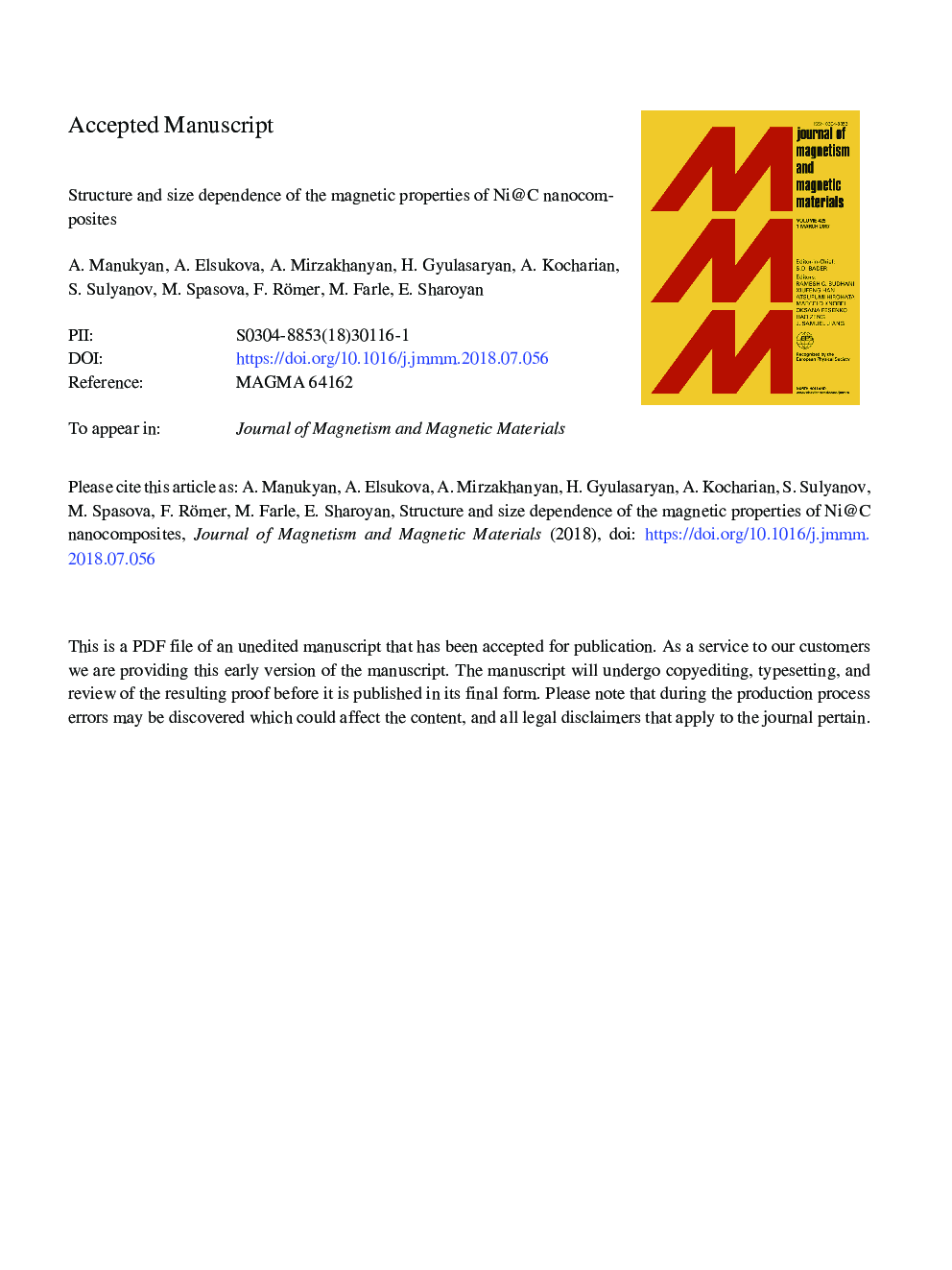| Article ID | Journal | Published Year | Pages | File Type |
|---|---|---|---|---|
| 8152493 | Journal of Magnetism and Magnetic Materials | 2018 | 14 Pages |
Abstract
Carbon-coated nickel (Ni) nanoparticles, Ni@C nanocomposites, have been synthesized using solid-state pyrolysis of nickel phthalocyanine and metal-free phthalocyanine (NiPc)x· (H2Pc)1âx solid solutions, 0⩽x⩽1. The Ni concentrations in carbon matrix (cNi) of the prepared samples continuously varied in the range of 0-3at.% (0-12wt.%). The average nanoparticle size varied within 4-40â¯nm range. All samples containing single domain Ni nanoparticles exhibit both ferromagnetic and superparamagnetic properties because of the wide range of size distribution. An abrupt drop of saturation magnetization has been observed with decrease in size of Ni nanoparticles from 40â¯nm to 12â¯nm. Nearly linear dependence of saturation magnetization on the nanoparticle surface/volume ratio can be interpreted as a result of contact interaction between Ni nanoparticles and the carbon matrix which provides an electron transfer from carbon matrix to nickel. However, further reductions in nanoparticle size increase magnetization growth of which can apparently contribute to the emergence of the giant paramagnetism due to large orbital moments of conductive electrons. The size effects and surface magnetic anisotropy in Ni@C nanocomposites are revealed in the measurements of coercive field, zero-field cooling (ZFC) susceptibility, blocking temperatures and ferromagnetic resonance spectra. Concentration dependencies of ferromagnetic and electron paramagnetic resonance parameters in Ni@C nanocomposites have also been investigated and their peculiarities highlighted. A correlation between concentration dependencies of FMR and SQUID magnetometry parameters, namely between the g-factor curves - geff, the resonance linewidth - ÎHFMR and coercive field - Hc, have been observed.
Related Topics
Physical Sciences and Engineering
Physics and Astronomy
Condensed Matter Physics
Authors
A. Manukyan, A. Elsukova, A. Mirzakhanyan, H. Gyulasaryan, A. Kocharian, S. Sulyanov, M. Spasova, F. Römer, M. Farle, E. Sharoyan,
